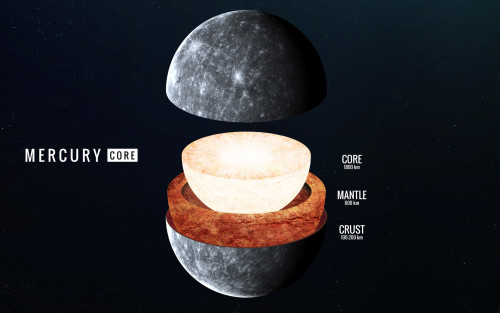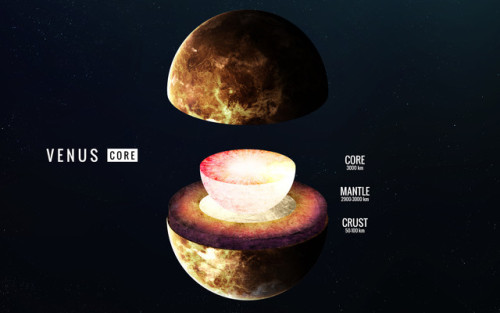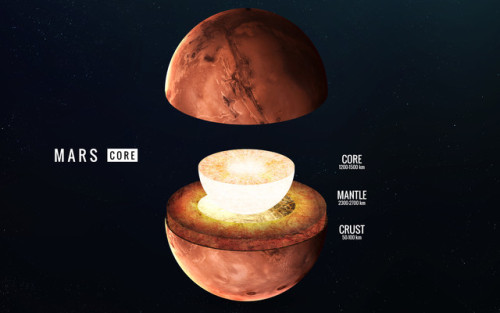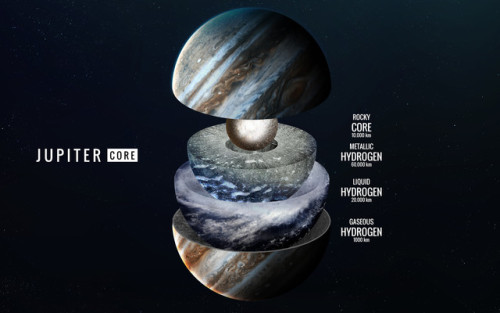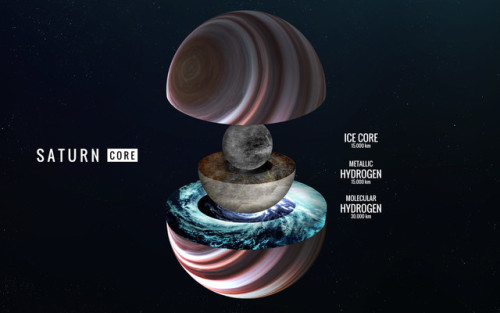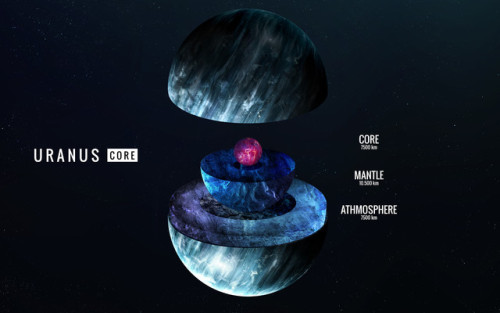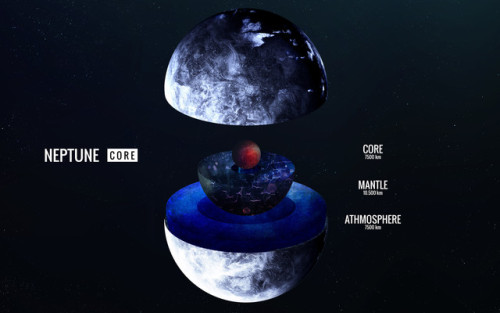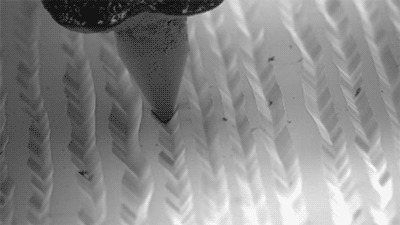We Will Not Leave The Crew Hanging!

We will not leave the crew hanging!
The crew module uprighting system rotates Orion should it come to rest upside down when landing in the water.
More Posts from Fillthevoid-with-space and Others


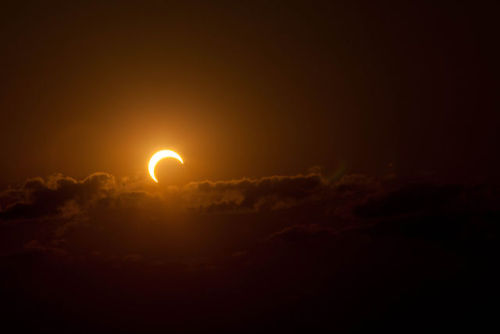

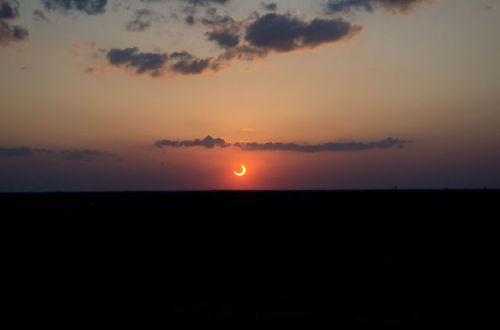


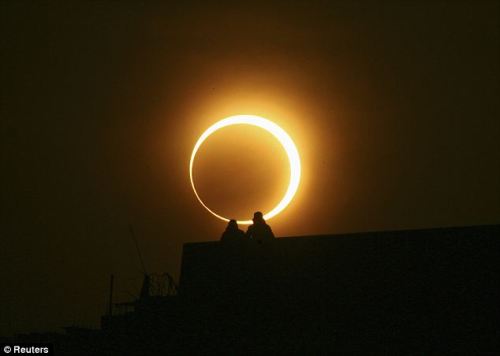
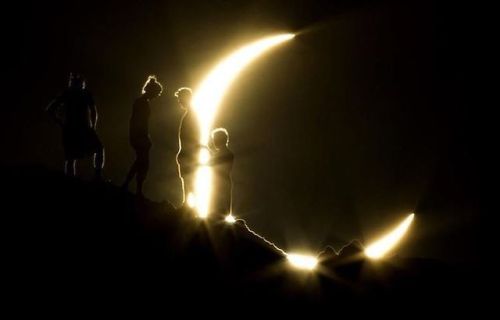
A ‘Ring of Fire’ solar eclipse is a rare phenomenon that occurs when the moon’s orbit is at its apogee: the part of its orbit farthest away from the Earth. Because the moon is so far away, it seems smaller than normal to the human eye. The result is that the moon doesn't entirely block out our view of the sun, but leaves an “annulus,” or ring of sunlight glowing around it. Hence the term “annular” eclipse rather than a “total” eclipse.

LUCIDA
[noun]
the brightest star in a constellation.
Etymology: from the full phrase in Latin stella lūcida meaning “bright star”. Lucida can be traced to the Latin verb lūcēre, "to shine,“ from lux, "light.”
[Tim Barton - Amber of the Void]

Did you know that when we classify stars, we’re comparing different types of stars but also stars at different stages of their life cycles? This is the second in a two-part episode about star classifications (go listen to Part 1 if you haven’t already; or listen to this one first and then listen to Part 1, it’s not exactly spoiler territory here). In this podcast, I talk about the various ways we've chosen to interpret observational data on stars, from observing the bright sky-dots to evaluating how bright they are by comparing them to each other, and all the new things we can do with new observational techniques. Never fear, Harvard observatory’s computers make a significant appearance again in this one!
I did my best to explain everything in as comprehensible terms as possible but you can hit me up with questions if you have them! I’m also on Twitter at @HDandtheVoid if you’d rather ask me there. And go ahead and check out the podcast on iTunes, rate it or review it if you’d like, and subscribe! I’ll always post all the extras here on tumblr but iTunes is probably more convenient for downloading.
Below the cut are my sources, music credits (thanks Elena for the filler music suggestion, very on-the-nose), vocab list, and the transcript. I mention a couple of books and quote a couple people in this episode so if you want to see that written down, those sources are there as well. Let me know what you think of this episode, let me know what you think I should research next*, tell me a fun space fact… anything’s helpful!
*(My thoughts were planets or looking into a couple major astronomers; either Edmond Halley or Tycho Brahe <3 or maybeStephen Hawking? Let me know by the 23rd so I can get a podcast up by July 3rd!)
Glossary:
Charge-Coupled Device (CCD) - a device that moves an electrical charge to shift the signal between incoming photons to turn them into electron charges that can then be read as an image. It’s used in digital cameras and in astronomy for UV-to-infrared applications.
deep-sky object - any cosmological object that isn’t individual stars or something from our Solar System. It’s a classification that includes nebulae, galaxies, and star clusters, and it has its roots in amateur astronomy.
Hipparcos satellite - the European Space Agency ‘high precision parallax collecting satellite’ that operated between 1989 and 1993. It gathered astronomical and photometric data of stars and was highly accurate in positioning and cataloging the star information it acquired on its four-year mission. Its data was published in 1997 in two catalogs: the Hipparcos Catalogue, distributed in print as well as on CDs and mapped 118,218 stars; and the Tycho Catalogue, distributed only on CDs and mapped 1,058,332 stars. The Tycho-2 Catalogue was an updated version of the Tycho Catalogue made with more refined imaging techniques and re-released on CDs and online in 2000 with over 2 million stars mapped.
neutron star - a type of star that has gone supernova, when the surviving core is 1.5 to 3 solar masses and contracts into a small, very dense, very fast-spinning star.
pulsar - a type of neutron stars that spins very, very fast: a kind of variable star that emits light pulses usually between 0.0014 seconds and 8.5 seconds.
stellar photometry/photometrics - measuring the brightness of stars and the changes of brightness over time. Previously used photographic plates and visual equipment in professional observatories, but shifted after an international photoelectric system was established in 1951. Currently we use photoelectric devices, such as CCDs.
stellar spectra classification - developed at Harvard Observatory in the 20th century, a categorization of stars based on stellar surface temperatures rather than actual compositional differences, gravity, or luminosity in stars. From highest temperature to lowest, the seven main stellar types are O, B, A, F, G, K, and M. O, B, and A type stars are often referred to as early spectral types, while cool stars like G, K, and M are known as late type stars, even though these titles are based in disproven ideas about stellar evolution.
Script/Transcript
Sources:
Standard stellar types via University of College London
List/timeline of major historical star catalogs
A brief history of early star catalogs, since the International Astronomical Union made a new star catalog in 2016.
A history of the Messier list
A history of the Messier List and how amateur astronomers use it
The Messier List
A really detailed Messier List, including Messier’s own observations on the object along with what it is currently understood to be
`Deep Sky Observers Companion online database
The Caldwell List via SEDS
The Caldwell List via the Astronomical League
Translation of ‘Durchmusterung’ via PONS online translation
Some hilarious mnemonics that are an alternative to the girl-kissing one to remember the order of stellar spectra. I don't know why there’s an entire page dedicated to this but good on you, Caltech.
Photometry overview via the Astronomical Society of South Australia
Hipparcos Catalog via NASA
History of the Hipparcos satellite and subsequent catalogs via ESA
Tycho-2 Catalog via NASA
The Hipparchos and Tycho catalogues online and downloadable if you have a whole lot of storage space to put them in
The U.S. Navy’s Naval Meteorology and Oceanography Command website has a list of recommended informational catalogs, last updated in November 2004
Information on current star charts, specialized and general, and how to download them
The Research Consortium on Nearby Stars’ website, working on cataloging and characterizing all stars within 10 parsecs/32.6 light years of Earth
The Smithsonian Astrophysical Observatory star catalog, which goes to V=9. Please don’t ask me how the hell it works, I didn’t bother ordering it
Another SAO catalog via NASA’s High Energy Astrophysics Science Archive Research Center website
If you can figure out how to navigate this catalog, you should probably take over this podcast for me.
Soba, Dava. The Glass Universe: How the Ladies of the Harvard Observatory Took the Measure of the Stars. Viking: New York, 2016.
“After all, astronomers could not yet tie any given traits of stars, such as temperature or age, to the various groupings of spectral lines. What they needed was a consistent classification—a holding pattern for the stars—that would facilitate fruitful future research” (91).
“A good number of other blank spaces in her tables pointed up other lacunae, such as missing minimum values, uncertain periods, absent spectra, or questionable variable type” (113).
Annie Jump Cannon: “Since I have done almost all the world’s work in this one branch, it was necessary for me to do most of the talking” (158)
Ogilvie, Marilyn Bailey. Women in Science: Antiquity Through the Nineteenth Century. MIT P: Cambridge, MA, 1986. Located in Google Books preview.
Mack, Pamela E. “Straying from Their Orbits: Women in Astronomy in America.” In Women of Science: Righting the Record. Ed. Gabriele Kass-Simon, Patricia Farnes, Deborah Nash. Indiana U P: Bloomington, IN, 1993 (72-116). Located in Google Books preview.
Selin, Helaine. “Battani” Encyclopaedia of the History of Science, Technology, and Medicine in Non-Western Cultures. Springer Science & Business Media: Berlin, Germany, 2011. Located in Google Books preview.
Intro Music: ‘Better Times Will Come’ by No Luck Club off their album Prosperity
Filler Music: ‘Champagne Supernova’ by Oasis off their album (What’s the Story) Morning Glory?
Outro Music: ‘Fields of Russia’ by Mutefish off their album On Draught
Merging Galaxies Have Enshrouded Black Holes
NASA - NuStar Mission patch. May 9, 2017 Black holes get a bad rap in popular culture for swallowing everything in their environments. In reality, stars, gas and dust can orbit black holes for long periods of time, until a major disruption pushes the material in. A merger of two galaxies is one such disruption. As the galaxies combine and their central black holes approach each other, gas and dust in the vicinity are pushed onto their respective black holes. An enormous amount of high-energy radiation is released as material spirals rapidly toward the hungry black hole, which becomes what astronomers call an active galactic nucleus (AGN). A study using NASA’s NuSTAR telescope shows that in the late stages of galaxy mergers, so much gas and dust falls toward a black hole that the extremely bright AGN is enshrouded. The combined effect of the gravity of the two galaxies slows the rotational speeds of gas and dust that would otherwise be orbiting freely. This loss of energy makes the material fall onto the black hole.
Image above: This illustration compares growing supermassive black holes in two different kinds of galaxies. A growing supermassive black hole in a normal galaxy would have a donut-shaped structure of gas and dust around it (left). In a merging galaxy, a sphere of material obscures the black hole (right). Image Credits: National Astronomical Observatory of Japan. “The further along the merger is, the more enshrouded the AGN will be,” said Claudio Ricci, lead author of the study published in the Monthly Notices Royal Astronomical Society. “Galaxies that are far along in the merging process are completely covered in a cocoon of gas and dust.” Ricci and colleagues observed the penetrating high-energy X-ray emission from 52 galaxies. About half of them were in the later stages of merging. Because NuSTAR is very sensitive to detecting the highest-energy X-rays, it was critical in establishing how much light escapes the sphere of gas and dust covering an AGN. The study was published in the Monthly Notices of the Royal Astronomical Society. Researchers compared NuSTAR observations of the galaxies with data from NASA’s Swift and Chandra and ESA’s XMM-Newton observatories, which look at lower energy components of the X-ray spectrum. If high-energy X-rays are detected from a galaxy, but low-energy X-rays are not, that is a sign that an AGN is heavily obscured.
NASA’s NuSTAR telescope. Image Credit: NASA
The study helps confirm the longstanding idea that an AGN’s black hole does most of its eating while enshrouded during the late stages of a merger. “A supermassive black hole grows rapidly during these mergers,” Ricci said. “The results further our understanding of the mysterious origins of the relationship between a black hole and its host galaxy.” NuSTAR is a Small Explorer mission led by Caltech and managed by NASA’s Jet Propulsion Laboratory for NASA’s Science Mission Directorate in Washington. NuSTAR was developed in partnership with the Danish Technical University and the Italian Space Agency (ASI). The spacecraft was built by Orbital Sciences Corp., Dulles, Virginia. NuSTAR’s mission operations center is at UC Berkeley, and the official data archive is at NASA’s High Energy Astrophysics Science Archive Research Center. ASI provides the mission’s ground station and a mirror archive. JPL is managed by Caltech for NASA. Related link: Monthly Notices of the Royal Astronomical Society: https://academic.oup.com/mnras/article/468/2/1273/2939810/Growing-supermassive-black-holes-in-the-late For more information on NuSTAR, visit: http://www.nasa.gov/nustar http://www.nustar.caltech.edu Images (mentioned), Text, Credits: NASA/Tony Greicius/JPL/Elizabeth Landau. Greetings, Orbiter.ch Full article
I mention New Horizons in today’s podcast but here’s some more up-to-date info!
Solar System: Things to Know This Week
Time for a little reconnaissance.

Our New Horizons spacecraft won’t arrive at its next destination in the distant Kuiper Belt—an object known as 2014 MU69—until New Year’s Day 2019, but researchers are already starting to study its environment thanks to a few rare observational opportunities this summer, including one on July 17. This week, we’re sharing 10 things to know about this exciting mission to a vast region of ancient mini-worlds billions of miles away.
1. First, Some Background

New Horizons launched on Jan. 19, 2006. It swung past Jupiter for a gravity boost and scientific studies in February 2007, and conducted a six-month reconnaissance flyby study of Pluto and its moons in summer 2015. The mission culminated with the closest approach to Pluto on July 14, 2015. Now, as part of an extended mission, the New Horizons spacecraft is heading farther into the Kuiper Belt.
2. A Kuiper Belt refresher

The Kuiper Belt is a region full of objects presumed to be remnants from the formation of our solar system some 4.6 billion years ago. It includes dwarf planets such as Pluto and is populated with hundreds of thousands of icy bodies larger than 62 miles (100 km) across and an estimated trillion or more comets. The first Kuiper Belt object was discovered in 1992.
3. That’s Pretty Far

When New Horizons flies by MU69 in 2019, it will be the most distant object ever explored by a spacecraft. This ancient Kuiper Belt object is not well understood because it is faint, small, and very far away, located approximately 4.1 billion miles (6.6 billion km) from Earth.
4. Shadow Play

To study this distant object from Earth, the New Horizons team have used data from the Hubble Space Telescope and the European Space Agency’s Gaia satellite to calculate where MU69 would cast a shadow on Earth’s surface as it passes in front of a star, an event known as an occultation.
5. An International Effort

One occultation occurred on June 3, 2017. More than 50 mission team members and collaborators set up telescopes across South Africa and Argentina, aiming to catch a two-second glimpse of the object’s shadow as it raced across the Earth. Joining in on the occultation observations were NASA’s Hubble Space Telescope and Gaia, a space observatory of the European Space Agency (ESA).
6. Piecing Together the Puzzle

Combined, the pre-positioned mobile telescopes captured more than 100,000 images of the occultation star that can be used to assess the Kuiper Belt object’s environment. While MU69 itself eluded direct detection, the June 3 data provided valuable and surprising insights. “These data show that MU69 might not be as dark or as large as some expected,” said occultation team leader Marc Buie, a New Horizons science team member from Southwest Research Institute in Boulder, Colorado.
7. One Major Missing Piece

Clear detection of MU69 remains elusive. “These [June 3 occultation] results are telling us something really interesting,” said New Horizons Principal Investigator Alan Stern, of the Southwest Research Institute. “The fact that we accomplished the occultation observations from every planned observing site but didn’t detect the object itself likely means that either MU69 is highly reflective and smaller than some expected, or it may be a binary or even a swarm of smaller bodies left from the time when the planets in our solar system formed.”
8. Another Opportunity

On July 10, the SOFIA team positioned its aircraft in the center of the shadow, pointing its powerful 100-inch (2.5-meter) telescope at MU69 when the object passed in front of the background star. The mission team will now analyze that data over the next few weeks, looking in particular for rings or debris around MU69 that might present problems for New Horizons when the spacecraft flies by in 2019. “This was the most challenging occultation observation because MU69 is so small and so distant,” said Kimberly Ennico Smith, SOFIA project scientist.
9. The Latest

On July 17, the Hubble Space Telescope will check for debris around MU69 while team members set up another “fence line” of small mobile telescopes along the predicted ground track of the occultation shadow in southern Argentina.
10. Past to Present

New Horizons has had quite the journey. Check out some of these mission videos for a quick tour of its major accomplishments and what’s next for this impressive spacecraft.
Make sure to follow us on Tumblr for your regular dose of space: http://nasa.tumblr.com

Aboard the International Space Station, astronaut Thomas Pesquet of the European Space Agency snapped this photo and wrote, ‘The view at night recently has been simply magnificent: few clouds, intense #aurora. I can’t look away from the windows.'
The dancing lights of the aurora provide stunning views, but also capture the imagination of scientists who study incoming energy and particles from the sun. Aurora are one effect of such energetic particles, which can speed out from the sun both in a steady stream called the solar wind and due to giant eruptions known as coronal mass ejections or CMEs. Credit: NASA/ESA
Make sure to follow us on Tumblr for your regular dose of space: http://nasa.tumblr.com
NASA's Swift Mission Maps a Star's 'Death Spiral' into a Black Hole
NASA - Swift Mission patch. March 20, 2017 Some 290 million years ago, a star much like the sun wandered too close to the central black hole of its galaxy. Intense tides tore the star apart, which produced an eruption of optical, ultraviolet and X-ray light that first reached Earth in 2014. Now, a team of scientists using observations from NASA’s Swift satellite have mapped out how and where these different wavelengths were produced in the event, named ASASSN-14li, as the shattered star’s debris circled the black hole. “We discovered brightness changes in X-rays that occurred about a month after similar changes were observed in visible and UV light,” said Dheeraj Pasham, an astrophysicist at the Massachusetts Institute of Technology (MIT) in Cambridge, Massachusetts, and the lead researcher of the study. “We think this means the optical and UV emission arose far from the black hole, where elliptical streams of orbiting matter crashed into each other.”
Swift Charts a Star’s ‘Death Spiral’ into Black Hole
Video above: This animation illustrates how debris from a tidally disrupted star collides with itself, creating shock waves that emit ultraviolet and optical light far from the black hole. According to Swift observations of ASASSN-14li, these clumps took about a month to fall back to the black hole, where they produced changes in the X-ray emission that correlated with the earlier UV and optical changes. Video Credits: NASA’s Goddard Space Flight Center. Astronomers think ASASSN-14li was produced when a sun-like star wandered too close to a 3-million-solar-mass black hole similar to the one at the center of our own galaxy. For comparison, the event horizon of a black hole like this is about 13 times bigger than the sun, and the accretion disk formed by the disrupted star could extend to more than twice Earth’s distance from the sun. When a star passes too close to a black hole with 10,000 or more times the sun’s mass, tidal forces outstrip the star’s own gravity, converting the star into a stream of debris. Astronomers call this a tidal disruption event. Matter falling toward a black hole collects into a spinning accretion disk, where it becomes compressed and heated before eventually spilling over the black hole’s event horizon, the point beyond which nothing can escape and astronomers cannot observe. Tidal disruption flares carry important information about how this debris initially settles into an accretion disk. Astronomers know the X-ray emission in these flares arises very close to the black hole. But the location of optical and UV light was unclear, even puzzling. In some of the best-studied events, this emission seems to be located much farther than where the black hole’s tides could shatter the star. Additionally, the gas emitting the light seemed to remain at steady temperatures for much longer than expected. ASASSN-14li was discovered Nov. 22, 2014, in images obtained by the All Sky Automated Survey for SuperNovae (ASASSN), which includes robotic telescopes in Hawaii and Chile. Follow-up observations with Swift’s X-ray and Ultraviolet/Optical telescopes began eight days later and continued every few days for the next nine months. The researchers supplemented later Swift observations with optical data from the Las Cumbres Observatory headquartered in Goleta, California.
Image above: This artist’s rendering shows the tidal disruption event named ASASSN-14li, where a star wandering too close to a 3-million-solar-mass black hole was torn apart. The debris gathered into an accretion disk around the black hole. New data from NASA’s Swift satellite show that the initial formation of the disk was shaped by interactions among incoming and outgoing streams of tidal debris. Image Credit: NASA’s Goddard Space Flight Center. In a paper describing the results published March 15 in The Astrophysical Journal Letters, Pasham, Cenko and their colleagues show how interactions among the infalling debris could create the observed optical and UV emission. Tidal debris initially falls toward the black hole but overshoots, arcing back out along elliptical orbits and eventually colliding with the incoming stream. “Returning clumps of debris strike the incoming stream, which results in shock waves that emit visible and ultraviolet light,” said Goddard’s Bradley Cenko, the acting Swift principal investigator and a member of the science team. “As these clumps fall down to the black hole, they also modulate the X-ray emission there.”
Swift spacecraft. Image Credit: NASA
Future observations of other tidal disruption events will be needed to further clarify the origin of optical and ultraviolet light. Goddard manages the Swift mission in collaboration with Pennsylvania State University in University Park, the Los Alamos National Laboratory in New Mexico and Orbital Sciences Corp. in Dulles, Virginia. Other partners include the University of Leicester and Mullard Space Science Laboratory in the United Kingdom, Brera Observatory and the Italian Space Agency in Italy, with additional collaborators in Germany and Japan. Related: Scientists Identify a Black Hole Choking on Stardust (MIT): http://news.mit.edu/2017/black-hole-choking-stardust-0315 ASASSN-14li: Destroyed Star Rains onto Black Hole, Winds Blow it Back: http://chandra.harvard.edu/photo/2015/tidal/ 'Cry’ of a Shredded Star Heralds a New Era for Testing Relativity: https://www.nasa.gov/mission_pages/swift/bursts/shredded-star.html Researchers Detail How a Distant Black Hole Devoured a Star: https://www.nasa.gov/mission_pages/swift/bursts/devoured-star.html All Sky Automated Survey for SuperNovae (ASASSN): http://www.astronomy.ohio-state.edu/~assassin/index.shtml Las Cumbres Observatory: https://lco.global/ NASA’s Swift: http://www.nasa.gov/mission_pages/swift/main/index.html Images (mentioned), Video (mentioned), Text, Credits: NASA’s Goddard Space Flight Center, by Francis Reddy/Karl Hille. Greetings, Orbiter.ch Full article
-
 innerfa18eww2tarawadean liked this · 5 years ago
innerfa18eww2tarawadean liked this · 5 years ago -
 mariner52156 liked this · 7 years ago
mariner52156 liked this · 7 years ago -
 xd-1691-blog liked this · 7 years ago
xd-1691-blog liked this · 7 years ago -
 1969aerospace liked this · 7 years ago
1969aerospace liked this · 7 years ago -
 aito-mation liked this · 7 years ago
aito-mation liked this · 7 years ago -
 cosbonaut liked this · 7 years ago
cosbonaut liked this · 7 years ago -
 wenrina-blog liked this · 7 years ago
wenrina-blog liked this · 7 years ago -
 thatonespaceguy-blog liked this · 7 years ago
thatonespaceguy-blog liked this · 7 years ago -
 destopia liked this · 7 years ago
destopia liked this · 7 years ago -
 hixystix reblogged this · 7 years ago
hixystix reblogged this · 7 years ago -
 bigangeltimetravel-blog liked this · 7 years ago
bigangeltimetravel-blog liked this · 7 years ago -
 strawberryshitcake reblogged this · 7 years ago
strawberryshitcake reblogged this · 7 years ago -
 gaylegohell liked this · 7 years ago
gaylegohell liked this · 7 years ago -
 cleversnail reblogged this · 7 years ago
cleversnail reblogged this · 7 years ago -
 notamushimaster liked this · 7 years ago
notamushimaster liked this · 7 years ago -
 konst65 liked this · 7 years ago
konst65 liked this · 7 years ago -
 twinamoto liked this · 7 years ago
twinamoto liked this · 7 years ago -
 skidrow-seymour liked this · 7 years ago
skidrow-seymour liked this · 7 years ago -
 pansinspace liked this · 7 years ago
pansinspace liked this · 7 years ago -
 treblewinners reblogged this · 7 years ago
treblewinners reblogged this · 7 years ago -
 treblewinners liked this · 7 years ago
treblewinners liked this · 7 years ago -
 hixystix liked this · 7 years ago
hixystix liked this · 7 years ago -
 gusgrissom reblogged this · 7 years ago
gusgrissom reblogged this · 7 years ago -
 footnoteinhistory liked this · 7 years ago
footnoteinhistory liked this · 7 years ago -
 ironbull69 liked this · 7 years ago
ironbull69 liked this · 7 years ago -
 bigclay5876 liked this · 7 years ago
bigclay5876 liked this · 7 years ago -
 bobbyrockford-blog liked this · 7 years ago
bobbyrockford-blog liked this · 7 years ago -
 72up liked this · 7 years ago
72up liked this · 7 years ago -
 tijsnyder-blog liked this · 7 years ago
tijsnyder-blog liked this · 7 years ago -
 okan170 reblogged this · 7 years ago
okan170 reblogged this · 7 years ago -
 okan170 liked this · 7 years ago
okan170 liked this · 7 years ago -
 aerobrake reblogged this · 7 years ago
aerobrake reblogged this · 7 years ago -
 markwateneymemorialcrater reblogged this · 7 years ago
markwateneymemorialcrater reblogged this · 7 years ago -
 markwateneymemorialcrater liked this · 7 years ago
markwateneymemorialcrater liked this · 7 years ago -
 good-and-colorful liked this · 7 years ago
good-and-colorful liked this · 7 years ago -
 ultraestonianblog liked this · 7 years ago
ultraestonianblog liked this · 7 years ago -
 drhoz liked this · 7 years ago
drhoz liked this · 7 years ago -
 echo-tape reblogged this · 7 years ago
echo-tape reblogged this · 7 years ago -
 ultimateaclrecovery liked this · 7 years ago
ultimateaclrecovery liked this · 7 years ago
A podcast project to fill the space in my heart and my time that used to be filled with academic research. In 2018, that space gets filled with... MORE SPACE! Cheerfully researched, painstakingly edited, informal as hell, definitely worth everyone's time.
243 posts



